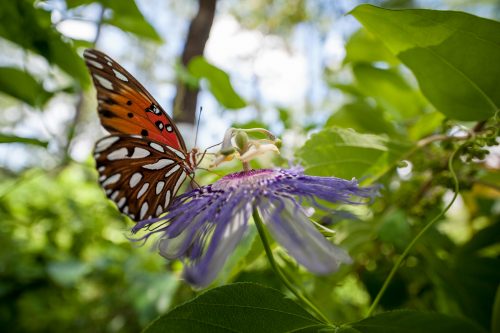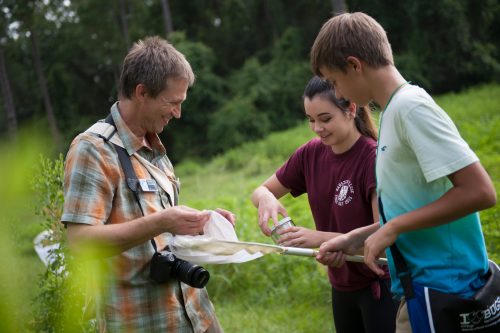
Attracting butterflies to your property is quite easy to do, and these beautiful pollinators may be enjoyed practically year-round simply by adding butterfly-friendly plants to your garden.
From a butterfly’s point-of-view, plants are divided into two important categories–host plants and nectar plants. The host plant is where a female adult butterfly lays her eggs, and it is this plant that caterpillars eat for nourishment after they hatch. Nectar plants provide a food source for adult butterflies and other pollinators.
The most successful butterfly gardens provide host and nectar plants, as each type of plant is needed for a butterfly’s life cycle. Sometimes these plants are the same, which is the case for milkweed, which is both the host plant and nectar source for monarch butterflies.
Monarchs lay their eggs on milkweed plants so that their caterpillars can feed on the leaves and flowers. However, monarchs also favor milkweed flowers when looking for nectar as adult butterflies. Because of their versatility and popularity with many butterfly species, milkweeds are a great selection when starting a butterfly garden.
Passion vines are another great host plant for a butterfly garden because they attract two beautiful species of butterflies: the Zebra longwing, which is also the Florida state butterfly, and the Gulf fritillary. In addition to serving as a host plant, passion flowers are also beautiful, fragrant and provide food for many pollinators.
Both milkweeds and passion vines should be planted in good supply, because caterpillars in their last stages will consume large amounts of their leaves. But don’t worry, even if these plants are eaten all the way to their stems, they will grow back from the roots.

“Different flowers bloom at different times of the year and of the day and different butterflies are active at different times of the year and of the day. So you want to provide a variety of species of plants and especially different nectar sources for them in your garden,” says Andrei Sourakov, the Collections Coordinator at the McGuire Center for Lepidoptera and Biodiversity. “You want a good soil and sun, and of course water to have a healthy butterfly garden. But remember many plants will even do well in the shade.
“Making a butterfly garden in your backyard is not a substitute for conserving the natural habitat. But this is the next best thing we can do to promote butterflies in our community.”
Because butterflies are host-plant specific, meaning each butterfly species lays its eggs on a specific type of plant, you can attract different butterflies based on which plants you choose for your garden. Pentas, azaleas and lantanas are all great nectar sources for larger butterflies such as swallowtails. Sweet almond bush or white clover often attract smaller butterflies such as hairstreaks, blues and skippers.